
What is Digital Employee Experience? Understanding the Virtual Workplace Landscape


The digital employee experience is an evolving concept encapsulating the total sum of digital interactions between an employee and their work environment. This definition includes the tools, platforms, and technologies employees use to complete their tasks.
The digital employee experience also involves communication with colleagues and engagement with their organization's systems and processes. As businesses increasingly rely on digital tools to make daily operations smoother, the quality of these interactions will leave a major impact on employee productivity, satisfaction, and retention.
With the rise in remote and hybrid work arrangements, the digital employee experience (or DEX) certainly isn't going anywhere. Employees are often judged by their output and the effectiveness of their digital collaboration, making effective digital tools a critical component of workplace success.
Organizations that improve the digital employee experience will see enhanced efficiency and a boost in employee morale, leading to a cumulative positive impact on corporate culture and bottom line.
Understanding and measuring the digital employee experience involves details like user-friendliness, accessibility, and personalization of digital resources.
It takes into account not just the tools themselves, but how seamlessly they integrate into people's daily workflows. By focusing on DEX, businesses can identify potential friction points and work to create a more supportive and engaging digital work ecosystem.
Defining Digital Employee Experience (DEX)
The digital employee experience refers to the intersection where employees interact with their company's technology. It encompasses all digital touch points an employee encounters throughout their workday.
The Key Components of Your DEX
Let's look at the key components of what your digital workspace needs to succeed.
User Interface (UI): These are all the visual elements through which employees interact with on all their digital applications. For example, CRMs, expense reporting, marketing automation, or intranet platforms.
User Experience (UX): This component, inextricably linked to UI, comprises the overall experience of employees have while using those digital tools, such as ease of use and accessibility.
Support and Training: This aspect refers to the resources available to help employees understand and use their digital tools effectively. When over 90% of workers want training that is easy to complete and understand, this detail is vital to empower employees.
Technology Stack: Lastly, this component is the combination of technologies that businesses implement to facilitate daily work and streamline operations. This would include things like your CMS, project management software, cloud storage solution, and real-time communication platform.
The Evolution of Digital Workplaces
The workplace has evolved substantially thanks to digital transformation. Historically, technology at work was limited to a desktop computer and maybe a handful of applications. Today, digital workplaces encompass a wide array of tools such as:
Collaboration Platforms: Slack, Microsoft Teams, and Zoom.
Productivity Suites: Microsoft 365 and Google Workspace.
Enterprise Resource Planning (ERP) Systems: Integrating various business processes.
Customer Relationship Management (CRM) Systems: Managing company interactions with current and prospective customers.
While technology is the backbone, a successful DEX strategy prioritizes digital experiences that are seamless, supportive, and enhance overall work performance.
That means actively seeking feedback on employee satisfaction and not just relying on the promise of trendy tools.
Tools and Technologies Enhancing DEX
Digital employee experience tools and technologies are designed to improve the overall experience of employees within an organization by enhancing their engagement, productivity, and satisfaction.
Here are some notable, real-world digital employee experience solutions across a variety of work categories:
Collaboration and Communication Tools
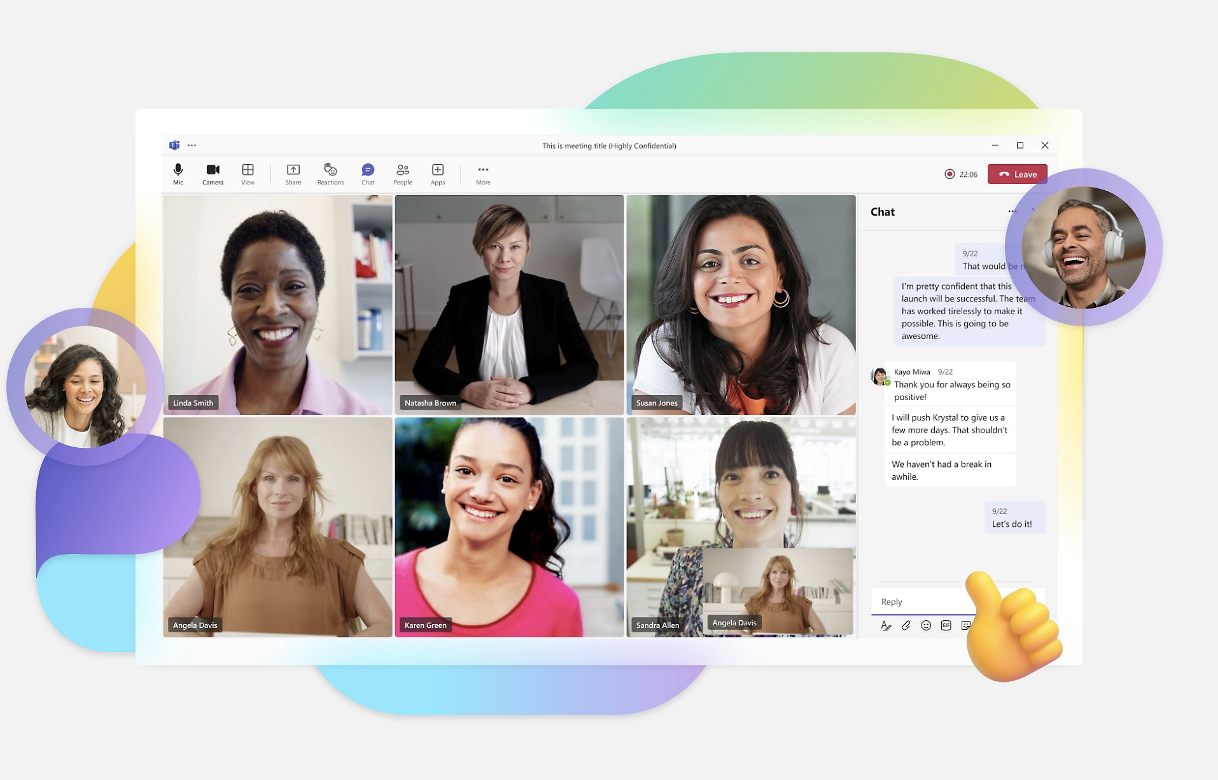
Microsoft Teams
Features: Chat, video conferencing, file sharing, collaborative document editing, and integration with Office 365 apps.
Benefits: Centralizes communication and collaboration, making it easier for teams to stay connected and productive, especially in remote or hybrid work environments.
Slack
Features: Channels for team conversations, direct messaging, file sharing, integrations with numerous third-party apps, and bots for automation.
Benefits: Streamlines communication by reducing email clutter and providing a platform for real-time interactions and collaboration.
Zoom
Features: Video and audio conferencing, webinars, screen sharing, meeting recordings, and virtual backgrounds.
Benefits: Facilitates virtual meetings and events, supporting remote work and maintaining face-to-face interactions when in-person meetings aren't possible.
Employee Engagement Platforms
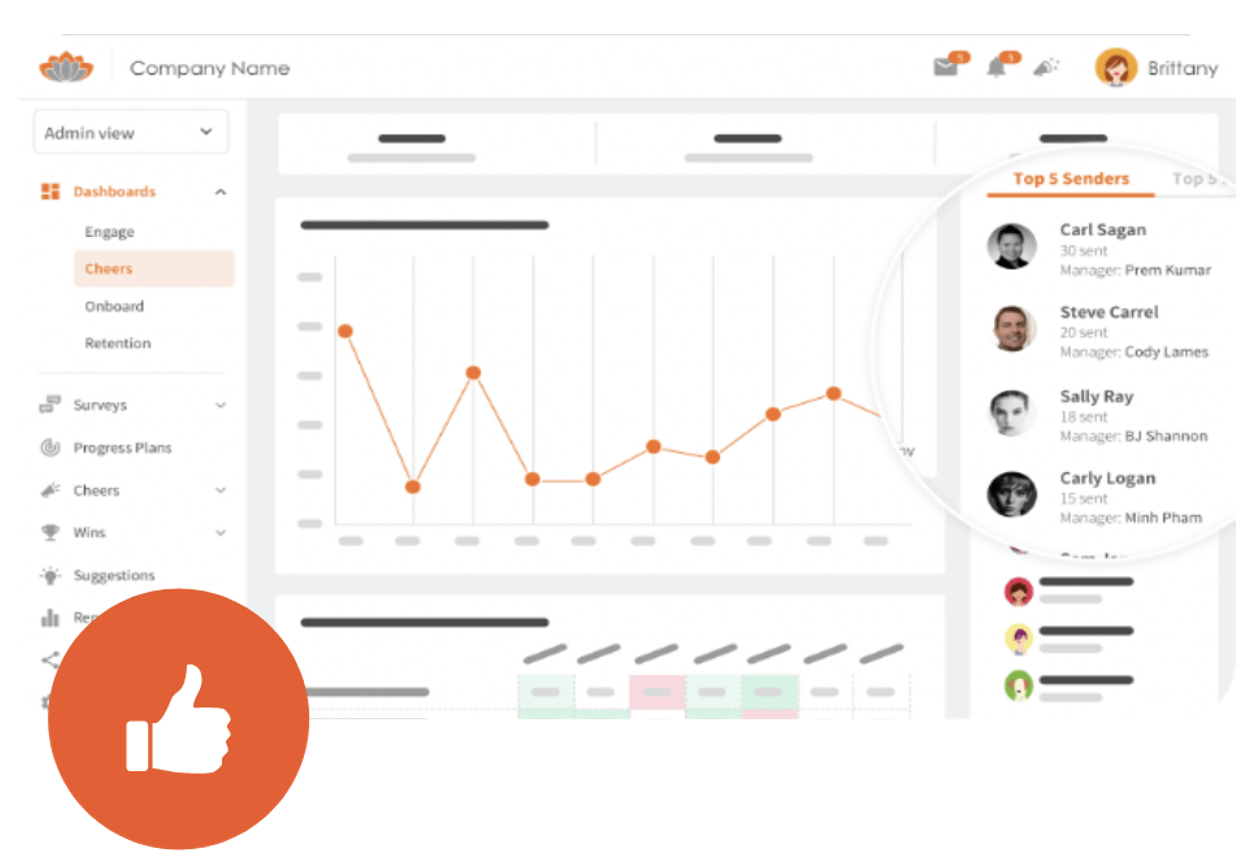
Culture Amp
Features: Employee surveys, engagement analytics, feedback tools, and action planning.
Benefits: Provides insights into employee sentiment and engagement, helping organizations improve culture and retention.
TINYpulse
Features: Pulse surveys, anonymous feedback, recognition tools, and performance tracking.
Benefits: Encourages continuous feedback and engagement, allowing managers to address issues promptly and recognize employees' contributions.
15Five
Features: Weekly check-ins, goal setting, performance reviews, and feedback tools.
Benefits: Enhances communication between employees and managers, supports personal and professional growth, and aligns individual goals with company objectives.
Project Management and Workflow Tools
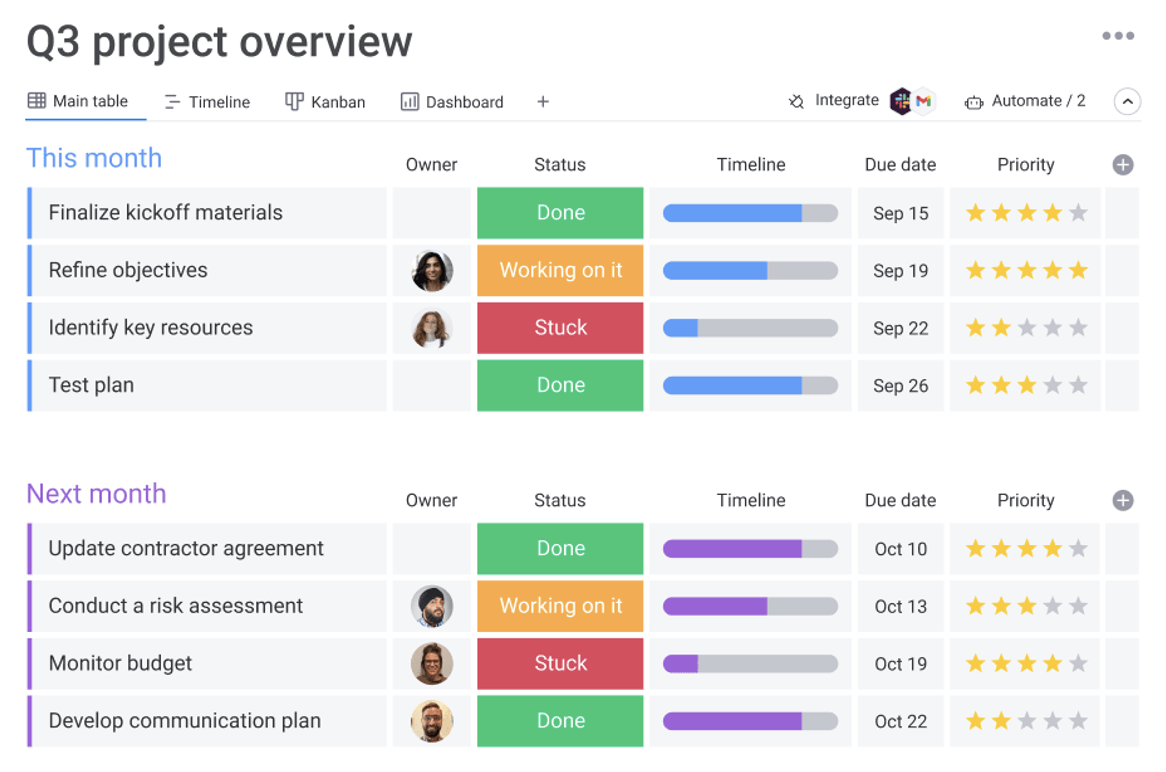
Trello
Features: Boards, lists, cards, task assignments, due dates, and integrations with other tools.
Benefits: Visual and intuitive project management that helps teams organize tasks and projects efficiently.
Asana
Features: Task lists, project timelines, milestones, workload management, and reporting.
Benefits: Offers comprehensive project management capabilities that improve team productivity and ensure projects stay on track.
Monday.com
Features: Customizable workflows, task management, time tracking, automations, and integrations.
Benefits: Versatile work operating system that adapts to various team needs, enhancing workflow efficiency and collaboration.
Learning and Development Platforms
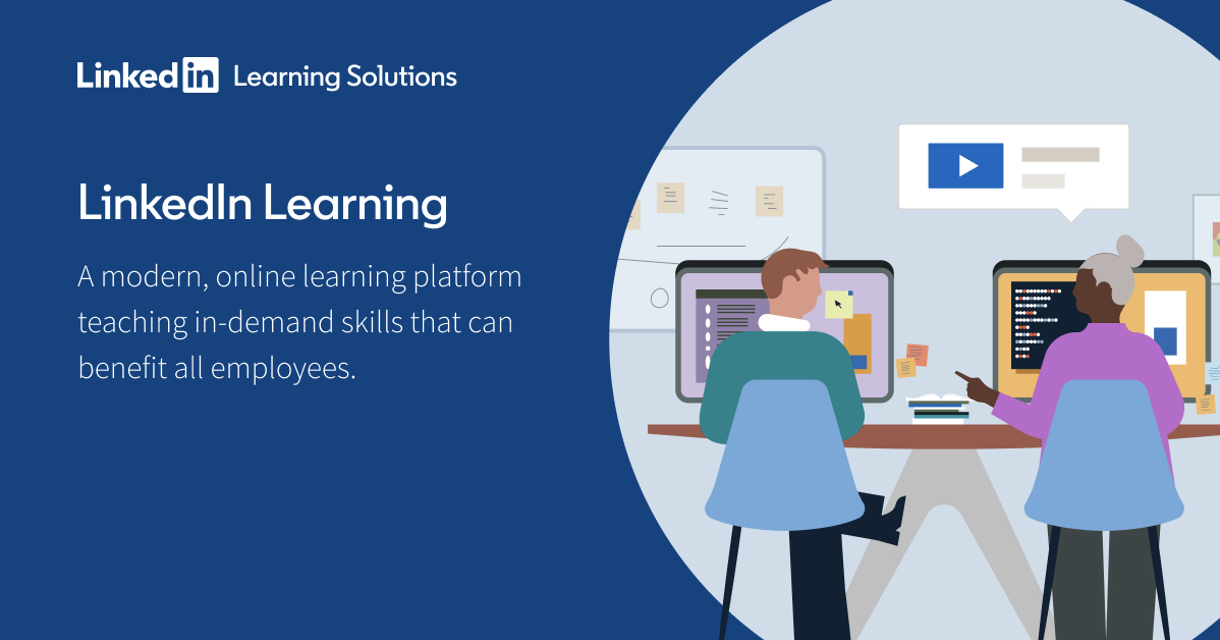
LinkedIn Learning
Features: Online courses, expert-led tutorials, personalized recommendations, and integration with LinkedIn profiles.
Benefits: Provides employees with access to a vast library of professional development resources, supporting continuous learning and skill enhancement.
Udemy for Business
Features: Course library, learning paths, analytics, and mobile access.
Benefits: Offers a wide range of courses for skill development and employee training, promoting a culture of continuous improvement.
Coursera for Business
Features: Access to courses and certifications from top universities and companies, skill tracking, and analytics.
Benefits: Enables organizations to offer high-quality education and training opportunities, helping employees advance their careers.
Employee Recognition and Rewards Systems
Bonusly
Features: Peer-to-peer recognition, reward points, a company-wide recognition feed, and customizable rewards.
Benefits: Fosters a culture of appreciation and recognition, boosting employee morale and engagement.
Kudos
Features: Recognition messages, points and rewards, social recognition feed, and reporting.
Benefits: Encourages frequent and meaningful recognition, enhancing employee satisfaction and loyalty.
Reward Gateway
Features: Employee recognition, benefits management, communications, and analytics.
Benefits: Combines recognition, benefits, and communication tools to improve overall employee engagement and well-being.
Human Resource Information Systems (HRIS)
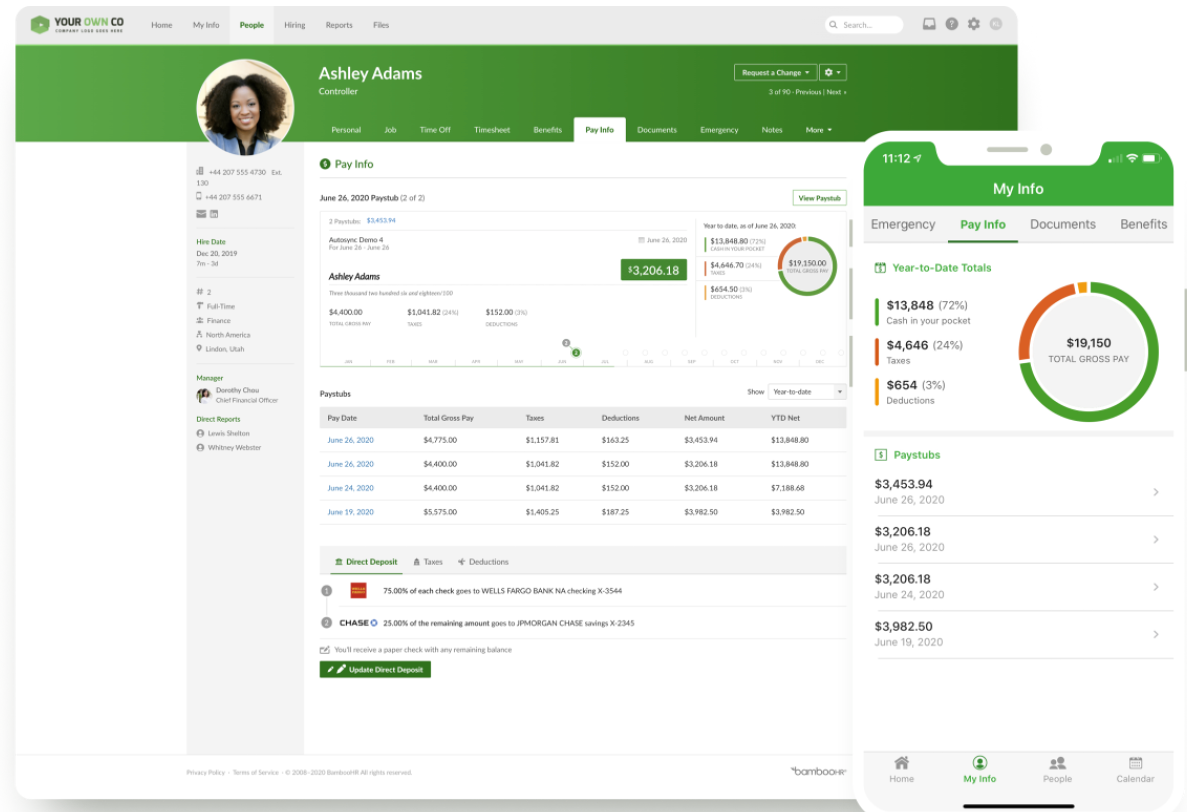
Workday
Features: HR management, payroll, talent management, time tracking, and financial management.
Benefits: Provides a unified platform for managing HR and financial processes, improving efficiency and data accuracy.
BambooHR
Features: Employee database, applicant tracking, performance management, and employee self-service.
Benefits: Simplifies HR processes for small and medium-sized businesses, enhancing employee experience and administrative efficiency.
SAP SuccessFactors
Features: Core HR, talent management, learning, workforce analytics, and payroll.
Benefits: Comprehensive HR suite that supports the entire employee lifecycle, from hiring to retirement, driving strategic HR initiatives.
Wellness and Mental Health Apps

Headspace for Work
Features: Meditation and mindfulness exercises, stress management tools, and sleep aids.
Benefits: Supports employee mental health and well-being, reducing stress and improving focus and productivity.
Calm for Business
Features: Meditation sessions, sleep stories, relaxation music, and mental health resources.
Benefits: Promotes mental wellness and relaxation, helping employees manage stress and improve their overall well-being.
Limeade
Features: Well-being assessments, personalized activities, engagement tools, and analytics.
Benefits: Enhances employee well-being and engagement through a holistic approach, addressing physical, emotional, and social health.
Employee Feedback and Survey Tools
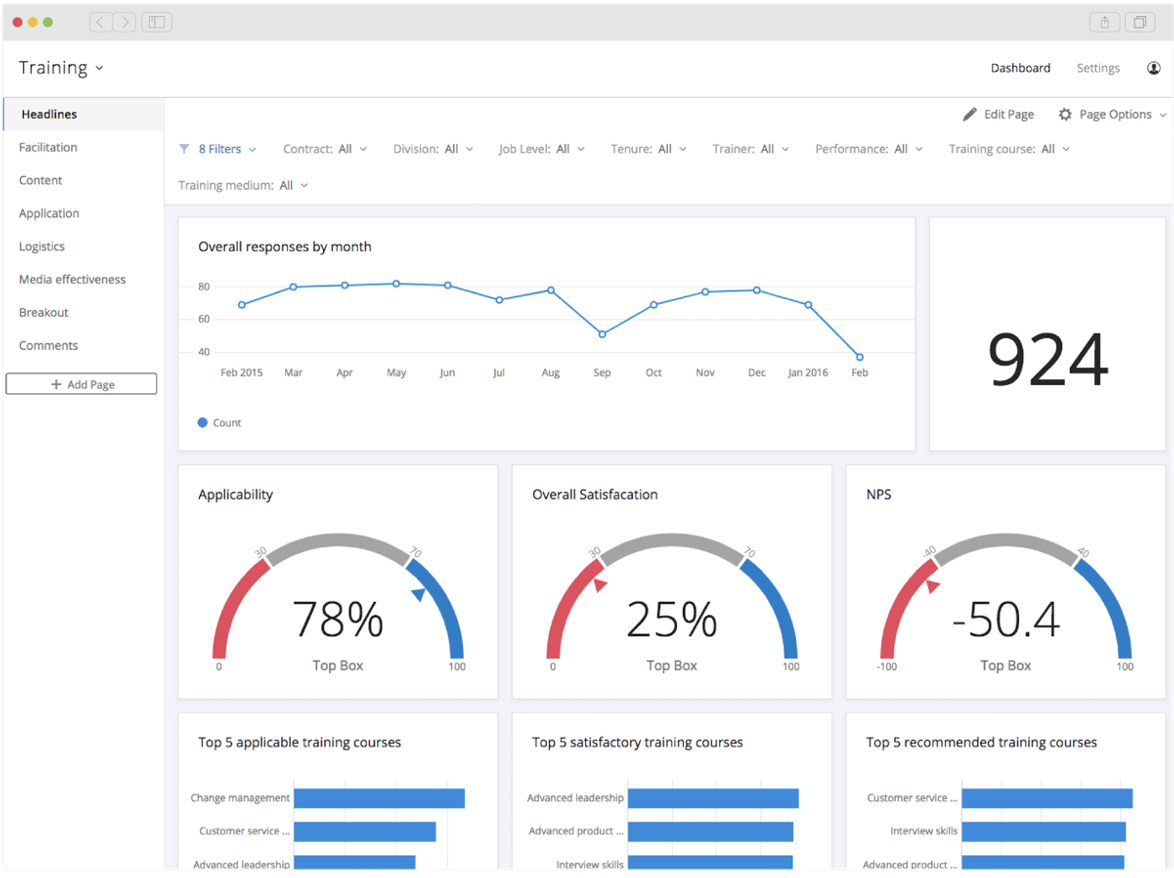
SurveyMonkey
Features: Survey creation, distribution, analytics, and templates.
Benefits: Allows organizations to gather and analyze employee feedback easily, informing decision-making and improving workplace satisfaction.
Qualtrics EmployeeXM
Features: Employee experience surveys, feedback tools, analytics, and action planning.
Benefits: Provides deep insights into employee experiences, helping organizations identify areas for improvement and drive engagement.
Officevibe
Features: Pulse surveys, feedback collection, recognition tools, and reporting.
Benefits: Facilitates regular check-ins and feedback, enhancing communication and addressing employee concerns proactively.
These tools and technologies collectively contribute to a more positive and productive digital employee experience, helping organizations attract, retain, and engage their workforce effectively.
Strategies for Remote and Hybrid Workforces
How employees collaborate and engage with their technology stack changes significantly when moving in from an in-person to a hybrid or remote work model.
Here are some best practices to keep in mind to keep your employees both happy and productive.
Creating a Seamless Digital Workspace
To establish a seamless digital workspace, companies should implement a centralized platform that integrates all necessary work tools and resources. This hub should offer:
Unified Communications Tools: Tools like Slack or Microsoft Teams should be in place for instant messaging, video conferencing, and real-time collaboration.
Cloud Services: Have one "single source of truth" cloud storage solution such as Google Drive or Dropbox for easy access and sharing of documents.
Comprehensive Workflow Management: Project management tools like Asana or Trello enables employees to keep track of deadlines, responsibilities, and progress.
These elements form the backbone of a digital workspace. They minimize disruptions and maximize productivity for employees, regardless of their location.
Establish Clear Expectations Remote Work and Hybrid Models
New work models require new work standards. Detailed, unambiguous expectations will help mitigate miscommunications with remote employees. These include:
Clear Remote Work Policies: Formalize remote work guidelines to manage expectations regarding availability, responsiveness, and productivity. Employee satisfaction thrives on clear communication.
Adaptable Workstations: Ensure that employees have the necessary hardware and ergonomic setups to work effectively from home.
Robust Security Protocols: Implement VPNs, two-factor authentication, and anti-malware tools to safeguard company data across different networks.
By focusing on these areas, organizations can offer their workforce the flexibility of remote work or hybrid arrangements without compromising their operations and the safety of their data.
Measuring and Optimizing DEX
So, how do you know if your digital employee experience is working well? Employee satisfaction seems like such an arbitrary and subjective metric - how do you accurately measure digital employee experience?
Organizations who want to quantify and improve the interaction between their workforce and digital tools need specific metrics and continuous feedback mechanisms.
Let's take a look and some examples below.
Leveraging Analytics and Data
Organizations harness both analytics and data to gain a holistic view of the digital employee experience.
Key metrics include system performance data, application usage statistics, and digital workflow efficiency. They'll often use tools such as:
Digital Experience Monitoring (DEM) solutions
End User Experience Monitoring (EUEM)
IT analytics platforms
These tools enable IT teams to track and analyze parameters such as:
Application load times: The duration it takes for software to become usable
Error rates: The frequency of errors encountered by employees.
Device performance: The efficiency and speed of the hardware in use.
Network latency: The delay before data transfer begins over the network.
By quantifying these aspects, organizations can identify bottlenecks and areas for enhancement in the technology landscape.
Now let's look at a way to get some "human" feedback.
Feedback Loops and Continuous Improvement
Digital employee experience management depends completely on continuous employee feedback. This feedback provides qualitative data that complements analytics, offering deeper insights into user satisfaction and pain points.
Organizations that routinely implement feedback use mechanisms such as:
Surveys
Suggestion boxes
User activity and sentiment analysis tools
Typically, IT and HR departments collaborate to address issues and implement changes based on:
Recurring themes in feedback that suggest systemic problems
User suggestions for enhancements or new tools
Sentiment analysis to gauge overall satisfaction
By analyzing and responding to this data, companies move ever closer towards an optimized digital environment that maintains productivity and encourages employee engagement.
The Impact of DEX on Digital Employee Experience
The digital employee experience fundamentally influences important business metrics, including employee productivity, job satisfaction, and ultimately, the bottom line of a business.
Let's take a look at the hard impact on the employee experience and how that translates into business results.
Employee Engagement and Productivity
Employee engagement is crucial for maintaining a high level of performance within a business. A well-designed DEX can help employees feel more connected and satisfied with their work environment. When less than 35% of the American workforce is engaged, it's clear more businesses need to consider the digital employee experience important.
Productivity often increases when digital tools are intuitive and support the employees' workflow. For instance, businesses that provide streamlined communication platforms enable faster problem-solving and collaboration.
Performance Metrics: Metrics such as project completion rates and quality of work improve.
Examples: Companies leveraging DEX have witnessed a decrease in time spent on administrative tasks due to automation.
Retention and Organizational Revenue
A positive DEX can be influential in retention rates, reducing turnover and the associated costs of recruiting and training new employees.
Furthermore, when employees feel supported by their digital environment, they're more likely to stay, leading to a more experienced and knowledgeable workforce.
This stability contributes to better organizational revenue, as the strength of the workforce is a direct driver of business outcomes.
Quantitative Impacts: Statistics show a correlation between employee retention rates and revenue growth.
Cost Savings: Implementing effective DEX strategies avoids the costs associated with high employee turnover.
Implementing a Successful DEX Program: A Step-by-Step Guide
Step 1: Define the Scope - Start by understanding the current state of your digital workplace. Assess the tools and platforms employees use, then define what a successful digital employee experience looks like for your organization.
Step 2: Gain Leadership Support - Executive buy-in is a must for securing resources and driving a culture shift. The last thing you want is to be managing change for your employees while also convincing the leadership that change is necessary. Leadership support helps immensely with emphasizing the importance of the DEX program across the organization.
Step 3: Create a Cross-Functional Team - Assemble a diverse group with representatives from IT, HR, and other relevant departments. This team will collaborate to steer the DEX program effectively.
Step 4: Develop the DEX Strategy
Outline clear objectives and milestones.
Identify the metrics to measure success of the DEX program.
Determine the technologies and processes that need to be updated or implemented.
Step 5: Communicate and Train - Communication is key to preparing the workforce for change. Develop a training program will help immensely to support employees through the transition, allowing them to better adopt new tools and best practices.
Step 6: Implement Change Management
Follow a structured approach to managing changes in the organization.
Document the employee journey to anticipate needs and address concerns proactively.
Engage employees throughout the process to foster a sense of ownership.
Step 7: Collect Feedback and Refine
Use surveys, interviews, and analytics to gather feedback on the experience.
Continuously improve the DEX program based on this feedback and observed outcomes.
By following these steps, organizations can establish a robust DEX program that crafts a great digital employee experience and fosters a culture of continuous learning and support.
Frequently Asked Questions
This section addresses common questions regarding the influence of the digital employee experience on productivity. We'll also explore strategies for management, essential tools, metrics for assessment, collaboration enhancement platforms, and future technology trends.
How Does the Digital Employee Experience Impact Workplace Productivity?
A robust digital employee experience streamlines workflows and reduces frustration from inefficient systems, leading to increased employee engagement and productivity.
Which Tools are Essential for Optimizing Digital Employee Experience?
Tools such as internal communication platforms, project management software, and feedback channels are vital for creating a seamless digital environment for employees.
What Strategies are Effective for Managing Digital Employee Experience?
Effective strategies include soliciting regular employee feedback, providing tailored training for digital tools, and implementing user-friendly technology that integrates seamlessly with workers' daily tasks.
What Ways Can the Digital Employee Experience Platform Enhance Team Collaboration?
A digital platform centralizes communications, facilitates real-time sharing of information, and connects remote and in-office teams.
What are the Key Metrics for Measuring the Digital Employee Experience?
Key metrics include the employee net promoter score (eNPS), digital tool adoption rates, ticket resolution times, and employee satisfaction surveys.
How do Digital Employee Experience Trends Influence Future Working Technologies?
Trends in digital employee experience drive innovation in workplace technology, leading to the development of more intuitive, artificial intelligence-powered, and personalized tools.
It's Time to Manage Digital Employee Experiences for Your Business
Need help building out your ideal DEX but don't know where to start? Rightpoint is here to guide you every step of the way.
With our extensive expertise in digital transformation and employee experience, we can help you design and implement a comprehensive strategy that enhances productivity, engagement, and satisfaction among your workforce.
Rightpoint offers tailored solutions that integrate seamlessly with your existing systems, ensuring a smooth transition and minimal disruption. Our team of experts will work closely with you to understand your unique needs and challenges, providing customized recommendations and actionable insights.
Whether it's deploying cutting-edge collaboration tools, optimizing workflows, or enhancing employee engagement through data-driven strategies, Rightpoint has the experience and resources to help you achieve your goals.
By partnering with Rightpoint, you can:
Enhance Collaboration and Communication: Implement advanced tools and platforms that facilitate seamless interaction and information sharing among your teams.
Boost Productivity: Streamline processes and automate routine tasks, allowing your employees to focus on high-value activities.
Increase Engagement and Retention: Foster a positive workplace culture through effective recognition programs, continuous feedback, and professional development opportunities.
Improve Employee Well-being: Provide access to wellness resources and support systems that promote mental and physical health.
Contact us today to start crafting a great digital employee experience that transforms your business from the ground up.


